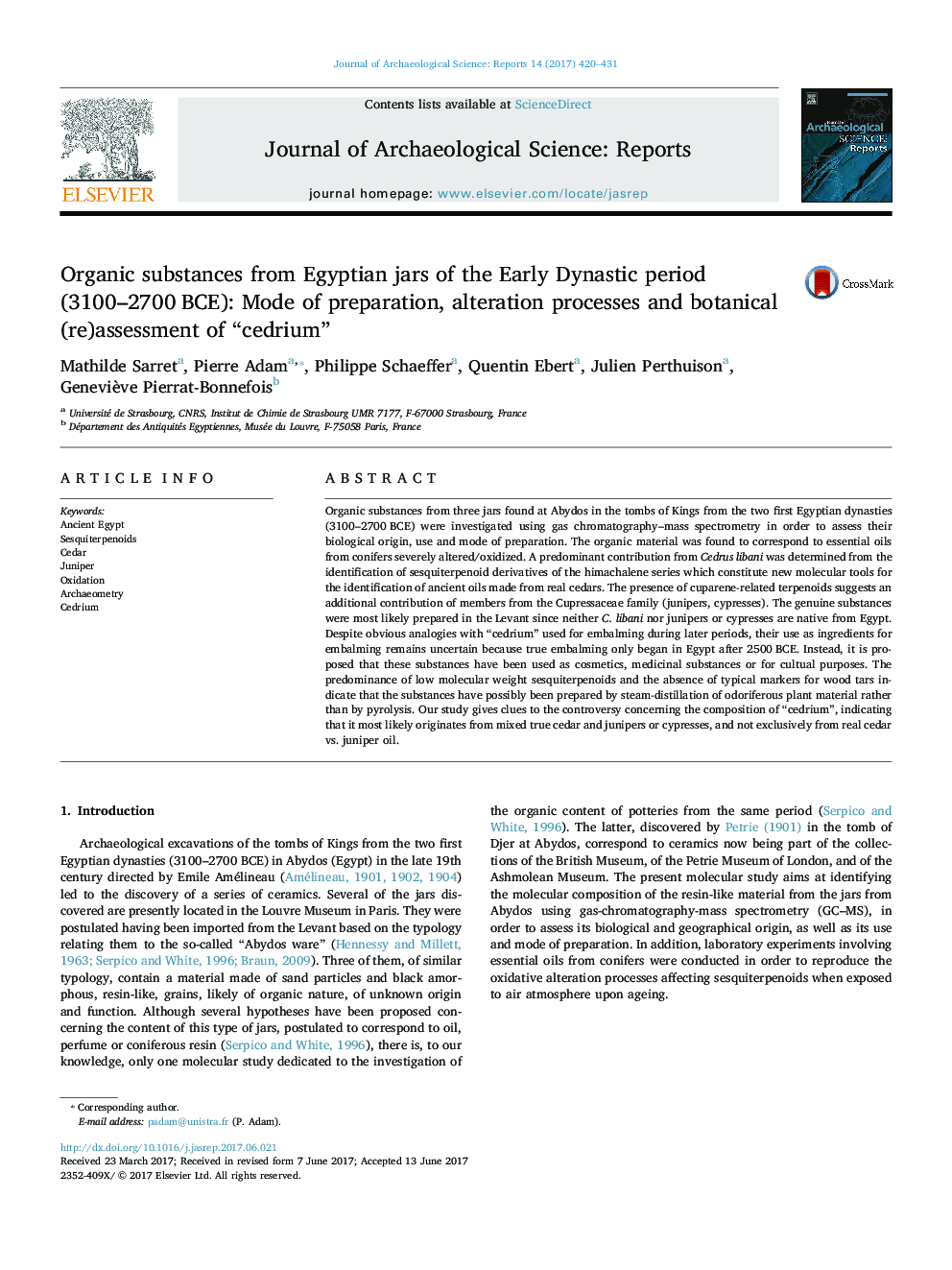| کد مقاله | کد نشریه | سال انتشار | مقاله انگلیسی | نسخه تمام متن |
|---|---|---|---|---|
| 5112354 | 1483929 | 2017 | 12 صفحه PDF | دانلود رایگان |
عنوان انگلیسی مقاله ISI
Organic substances from Egyptian jars of the Early Dynastic period (3100-2700Â BCE): Mode of preparation, alteration processes and botanical (re)assessment of “cedrium”
دانلود مقاله + سفارش ترجمه
دانلود مقاله ISI انگلیسی
رایگان برای ایرانیان
کلمات کلیدی
موضوعات مرتبط
علوم انسانی و اجتماعی
علوم انسانی و هنر
تاریخ
پیش نمایش صفحه اول مقاله

چکیده انگلیسی
Organic substances from three jars found at Abydos in the tombs of Kings from the two first Egyptian dynasties (3100-2700Â BCE) were investigated using gas chromatography-mass spectrometry in order to assess their biological origin, use and mode of preparation. The organic material was found to correspond to essential oils from conifers severely altered/oxidized. A predominant contribution from Cedrus libani was determined from the identification of sesquiterpenoid derivatives of the himachalene series which constitute new molecular tools for the identification of ancient oils made from real cedars. The presence of cuparene-related terpenoids suggests an additional contribution of members from the Cupressaceae family (junipers, cypresses). The genuine substances were most likely prepared in the Levant since neither C. libani nor junipers or cypresses are native from Egypt. Despite obvious analogies with “cedrium” used for embalming during later periods, their use as ingredients for embalming remains uncertain because true embalming only began in Egypt after 2500Â BCE. Instead, it is proposed that these substances have been used as cosmetics, medicinal substances or for cultual purposes. The predominance of low molecular weight sesquiterpenoids and the absence of typical markers for wood tars indicate that the substances have possibly been prepared by steam-distillation of odoriferous plant material rather than by pyrolysis. Our study gives clues to the controversy concerning the composition of “cedrium”, indicating that it most likely originates from mixed true cedar and junipers or cypresses, and not exclusively from real cedar vs. juniper oil.
ناشر
Database: Elsevier - ScienceDirect (ساینس دایرکت)
Journal: Journal of Archaeological Science: Reports - Volume 14, August 2017, Pages 420-431
Journal: Journal of Archaeological Science: Reports - Volume 14, August 2017, Pages 420-431
نویسندگان
Mathilde Sarret, Pierre Adam, Philippe Schaeffer, Quentin Ebert, Julien Perthuison, Geneviève Pierrat-Bonnefois,